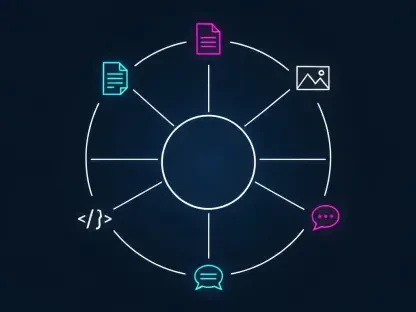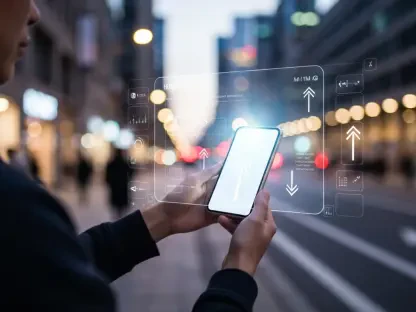In the rapidly evolving landscape of assistive technology, Oscar Vail stands out as a luminary, particularly through his contributions to projects like OpenExo. With a background enriched by groundbreaking work in quantum computing and robotics, Oscar’s insights are invaluable in understanding the potential of open-source technologies in transforming lives.
Can you describe the core objectives of the OpenExo project and how it aims to impact individuals with disabilities?
The primary goal of OpenExo is to democratize access to advanced exoskeleton technology. By making the framework open-source, we’re able to provide researchers and developers worldwide with the tools they need to create and refine exoskeletons tailored to individual needs. This approach has the potential to significantly enhance mobility and independence for individuals with disabilities, allowing them to walk and engage in everyday activities more autonomously.
Could you elaborate on the specific contributions of NAU associate professor Zach Lerner’s Biomechatronics Lab to this project?
Zach Lerner’s lab has been the driving force behind the OpenExo project. Their years of dedicated research have culminated in the creation of the first comprehensive open-source exoskeleton system. This extensive effort includes breakthroughs in software, mechanical design, and biomechanical optimization, which collectively enable us to offer a robust and adaptable framework for developing personalised exoskeletons.
What are some of the major challenges you faced in developing an open-source exoskeleton framework?
One of the significant challenges is ensuring that the exoskeletons are not only functional but also biomechanically beneficial. This requires intricate designs, constant testing, and adaptability to numerous use cases and physical conditions. Additionally, integrating various technologies from different disciplines and maintaining a collaborative development environment poses its own set of hurdles.
How does the OpenExo system help reduce the barriers to entry for new exoskeleton developers and researchers?
OpenExo provides a comprehensive package including design files, source code, and detailed construction guides, drastically lowering the technical and financial barriers. By offering these resources freely, it empowers smaller research teams and startups to dive into exoskeleton development without needing substantial upfront investment, thus fostering innovation and acceleration in the field.
Can you explain what is included in the OpenExo framework, such as design files, code, and step-by-step guides?
The OpenExo framework is a complete toolkit for exoskeleton development. It includes detailed design files for different exoskeleton configurations, source code for the software systems, and step-by-step guides for assembly and deployment. This makes it possible for anyone with the required expertise to build their custom exoskeleton prototypes.
How does OpenExo ensure biomechanical benefits for individuals using the exoskeletons?
We have focused extensively on biomechanical research to optimize the exoskeleton’s interaction with the human body. The framework incorporates data-driven insights to ensure that the exoskeletons are efficient and ergonomic, adapting to individual needs to provide maximum support and comfort.
In what ways does OpenExo integrate technologies from different engineering, computer science, and physiological fields?
The integration spans across various domains, combining mechanical engineering principles for the structural components, advanced computer science for the control algorithms, and physiological insights to tailor the systems to human anatomy and movement. This interdisciplinary approach is crucial for developing sophisticated, functional exoskeletons.
What has been the response from the research community since the launch of OpenExo?
The reaction has been incredibly positive. Researchers worldwide are excited about the possibilities that OpenExo presents. It eliminates a significant amount of the initial legwork others would need to put in, allowing them to focus on innovation and specialization. This has led to numerous collaborations and the exploration of new research directions.
Could you discuss any success stories or case studies where the exoskeletons have significantly impacted individuals’ lives?
We’ve seen transformative cases, particularly with children who have cerebral palsy. By using exoskeletons developed with OpenExo, many have been able to participate in activities alongside their peers more comfortably, which has contributed positively to their social development and physical well-being.
How have children with cerebral palsy and patients with gait disorders benefited from your team’s work?
Our work on OpenExo has helped children with cerebral palsy improve their mobility, giving them the ability to walk more independently and engage in socially enriching experiences. For patients with gait disorders, the exoskeletons provide much-needed support, enhancing rehabilitation outcomes and improving overall quality of life.
What are some examples of spin-offs or commercial products that have emerged from this research?
One notable spin-off is a robotic ankle device that’s now available on the market. Leveraging the foundation built by our research, it offers improved mobility and has been well-received in both clinical and individual use cases. This is just one example of how open-source frameworks can lead to viable commercial solutions.
Can you share the process of obtaining patents for the development of these exoskeletons?
Patenting such technology involves protecting the unique design elements and the intricate software systems that make the exoskeletons efficient. It’s a meticulous process that ensures innovators’ work is recognized and rewarded, encouraging further exploration and invention within the field.
What is your vision for the future of exoskeleton research and its application in rehabilitation and mobility augmentation?
I envision a future where exoskeleton technology is commonplace in rehabilitation centers and even in homes. As the technology becomes more refined and accessible, it will play a pivotal role in enabling people of all ages with mobility challenges to live enriched, independent lives.
How do you anticipate OpenExo influencing the field of robot-aided rehabilitation in the coming years?
OpenExo is poised to revolutionize robot-aided rehabilitation by facilitating rapid advances and reducing costs. As more researchers build on this framework, we expect a proliferation of innovative designs and applications tailored to diverse rehabilitation needs.
Could you give us insights into upcoming projects or research directions following OpenExo’s launch?
Moving forward, we are looking to enhance the sensory feedback mechanisms within the exoskeletons, which would allow users to receive more natural and intuitive responses. We’re also exploring ways to integrate AI to further personalize the rehabilitation process, adapting in real-time to each user’s unique requirements.









